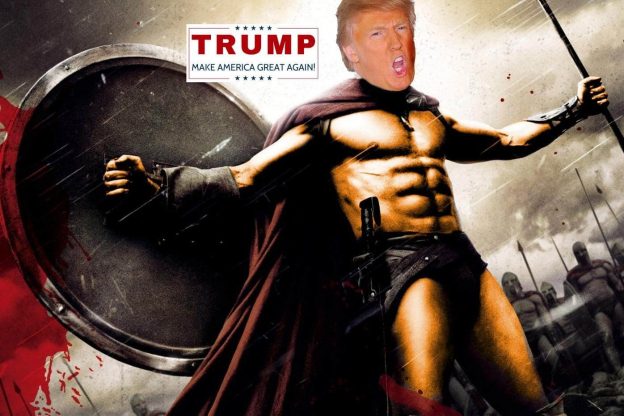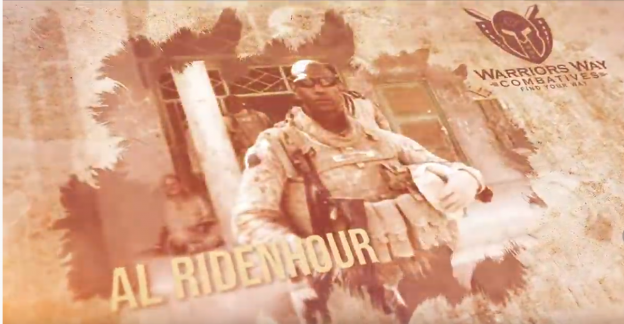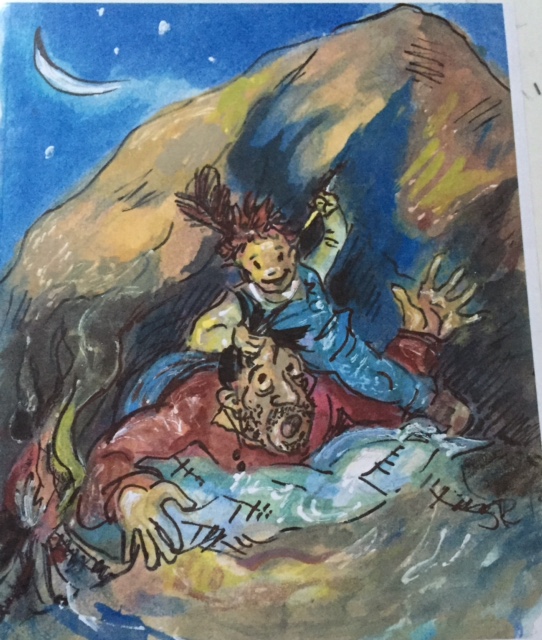“Virtuous people become virtuous by acting virtuously. Similarly, one becomes a warrior by acting like one. The Warrior Within envisions himself crucifying, without mercy, the monsters of his choosing.”—Jack Kerwick
Warriors aren’t born. They are made.
This is the philosophy behind Warrior Flow Combatives, or Warrior Flow.
And a Warrior without Ruthless Intent is like a library without books or, more accurate yet, a square without four sides.
Ruthless Intent is nothing more or less than the will to crush the Enemy, those who would prey upon the innocent, into nonexistence.
To the end of cultivating this virtue—and, yes, it most certainly is a martial and moral virtue—physical training is necessary, yes. But even more importantly, mental training is required.
To cultivate Ruthless Intent, the aspiring Warrior must routinely engage in three mutually supportive and equally essential activities: Self-Talk, Visualization, and what Warrior Flow refers to as “Visceralization.”
Self-talk requires one to pay meticulous attention to the inner commentary that the mind ceaselessly cranks out, for even when it is commentary upon happenings in the external world, it is, ultimately, autobiographical, it is self-commentary, for our thoughts on the world, our relationships with others, are inescapably colored and shaped by our experiences and memories.
We need to manage that “inner voice.”
Self-talk is inescapable. We are all incessantly speaking to ourselves, whether we realize it or not. There is scarcely a moment when, either through word or image, we aren’t communicating to ourselves. Past experiences, or our interpretations of those experiences, we have, in large measure subconsciously, weaved into an autobiographical narrative. As is the case with any other work, our self-story is necessarily selectively edited. Yet we confuse this highly redacted version of ourselves with our whole selves.
And we allow this abridged reading of ourselves to color our sense of reality.
Warrior Flow implores students to attend carefully to their Self-Talk. Moreover, they are to assume conscious control of it, to habituate their minds to thinking self-affirming thoughts. In the case of this combat art specifically, the Warrior-in-the-Making must begin thinking and living as if the future self that he wants to become is already a present reality.
It doesn’t demand much reflection to realize that this is indeed how we became whatever it is that we’ve ever become. If one wants to become a cook, one must first cook. If one want to become a dancer, one must dance. If one wants to become a football player, one must play football.
Aristotle, the most prominent of all virtue theorists, wrote famously on this subject. Brave men become brave by acting like brave men. Just men become just by acting like just men.
Comprehensively, virtuous people become virtuous by acting virtuously.
Similarly, one becomes a warrior by acting like one. And acting like a warrior means as well thinking like one.
Yet Aristotle knew that being virtuous was a matter not just of thinking a certain way, but of feeling the appropriate way. For instance, a courageous person is someone who knows what to fear and the extent to which he should fear it. The object of fear elicits the emotion or passion of fear within the body. The courageous person, though, experiences fear in the appropriate proportion.
The aspiring warrior must feel as the Warrior that he will become feels. As he regularly affirms his own physical abilities, his resolute acceptance of injury, and even death, in battle, and his equal resolve to incapacitate the Enemy by whichever means, with ruthless efficiency, his Self-Talk will necessarily be accompanied by visuals.
As with his Self-Talk, though, the Warrior Within must make sure that the activity of Visualization in which he engages is consciously directed. He needs to open up the reservoir of his imagination and unleash his creative powers as he envisions himself crucifying, without mercy, the monsters of his choosing. They could be real people or imaginary. They can be people who one has personally known or only those of whom one has heard. In any event, to cultivate Ruthless Intent—the conviction that predators must be reduced to prey, the raw, undifferentiated determination to instill within violent attackers the same unbridled terror that they sought to inspire in their victims—one must not only visualize, but visceralize.
Visceralization is a species of visualization. When a person engages in Visceralization, he doesn’t just see the object of his imagination; he hears, smells, and touches it, and he perceives it with all of his senses in painstaking detail. He visualizes it in what students of Neuro Linguistic Programming (NLP) refer to as an “associated” way.
In other words, when associated visualization (visceralization) occurs, the visualizer doesn’t just form a mental picture of himself within the framework of the visual, as is the case when it is “dissociated visualization” that occurs. Associated visualization, in contrast, immerses the visualizer within the scene that he envisages, allowing him to enact it.
When a person visceralizes he experiences those emotions that he either once experienced, if he is in effect reliving a past event, or those that he would experience if the event that he visceralizes actually occurred. Physiologically speaking, the emotion felt in the body while visceralizing and that felt in response to a real world happening are one and the same. The brain doesn’t know the difference.
Specifically, when developing Ruthless Intent, an aspiring warrior must not only perceive his attacker or attackers in his mind; he must as well feel in the very marrow of his bones all of the contempt, the righteous indignation and fury with which he visualizes himself destroying the Enemy. Physiologically speaking, the feelings that he conjures while training are one and the same as those that he would have in a real confrontation. The brain doesn’t know the difference between the fantasy and the reality.
While immersed in visceralization, the aspiring Warrior can, for example, feel the flesh of the Enemy’s neck spontaneously with the sound of it snapping as he drives an axe-handed chop to it with all of the power that he believes is necessary for the purpose of cleaving the Enemy’s skull from his body. Beholding the (admittedly anatomically impossible) spectacle promises to go no small distance toward marshalling and channeling from within one’s pain, rage, fear, and disdain for the wicked.
I leave this to your fertile imagination, but there are practically limitless ways by which the Warrior-in-Waiting can visceralize visiting destruction upon the Enemy. Creativity in combat is a virtue of the Warrior. Yet it presupposes Ruthless Intent.
And to the end of cultivating Ruthless Intent, Self-Talk, Visualization, and Visceralization are imperative.
***
Jack Kerwick is a columnist for Beliefnet, FrontPage Magazine, American Greatness and Townhall.com. He holds a Ph.D. in philosophy from Temple University, a master’s degree in philosophy from Baylor University, and a bachelor’s degree in philosophy and religious studies from Wingate University. I teach philosophy at several colleges in the New Jersey and Pennsylvania areas. Follow him on Twitter.





